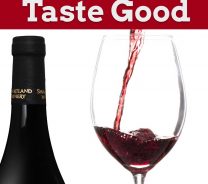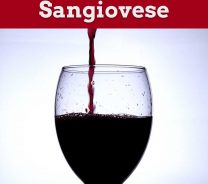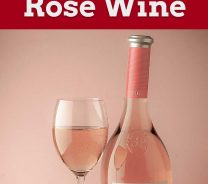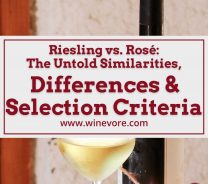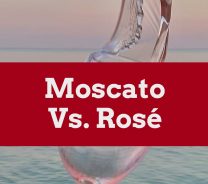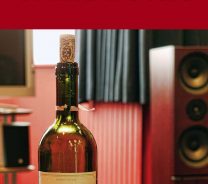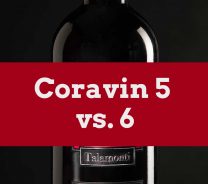What does Riesling taste like?
Last Updated on August 1st, 2023
Reader Disclosure Disclosure: We may earn commissions for purchases made through links on our site. Learn more on our about us page.Riesling is a beloved white wine grape variety that produces light-bodied wines with high acidity ranging from dry to very sweet. They are popular for their intense aromas and flavors, such as:
- Nectarine
- Apricot
- Honey-crisp apple
- Pear
- Honeycomb
- Jasmine
- Lime peel
Riesling can also have a distinctive taste of petrol due to a compound known as TDN found in the grapes.
Hailing from Germany, this white wine grape variety is grown across the world in regions such as Hungary, the Czech Republic, Austria, Australia, New Zealand, and the United States (Oregon, California, New York, Washington State). The final taste profile of Riesling largely depends on how old the bottle is and whether it is a sweet or dry wine.
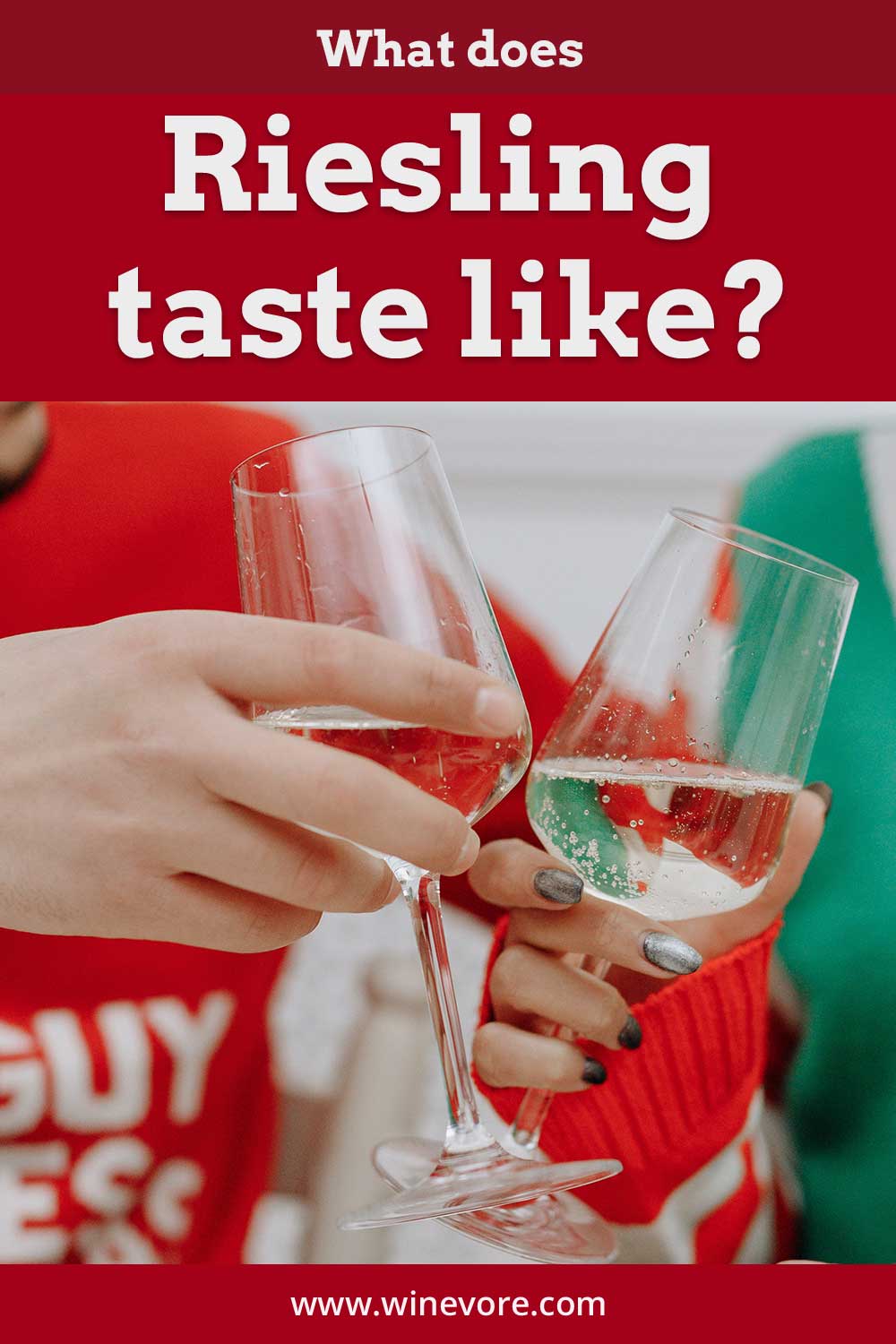
Does Riesling taste good?
Yes, Riesling has an incredibly fragrant and aromatic taste profile, so it is one of the most popular white wine varieties in the world. It is an incredibly refreshing wine due to to its high acidity and light body if it’s dry. The sweeter varieties have a luscious and decadent taste, like drinking a dessert.
How would you describe the taste of Riesling?
Generally, Riesling is a highly aromatic wine that tastes of a range of fruits, from stone fruits to citrus. It can have notes of:
- Nectarine
- Apricot
- Honey-crisp apple
- Pear
- Honeycomb
- Jasmine
- Lime peel
- Petrol, due to the presence of a compound known as TDN found in Riesling grapes.
The final taste of the Riesling wine will depend, however, on the age of the bottle and whether it is a sweet or dry wine.
Younger Rieslings will taste:
- Tarter
- More Acidic
- Citrus fruits will taste more predominant.
Older Rieslings will taste:
- Sweeter
- More Intense
- More Fragrant
Dry Rieslings, such as those from Alsace or the USA, will have stronger tastes of:
- Green Apple
- Citrus
- Peach
- Crisp acidity
Sweet Rieslings, such as those from Germany, will taste of:
- Tropical fruits like lychee and pineapple
- Honey
- Ginger
- Elderflower
- Honeysuckle
- Smokiness
How will I know if I like the taste of Riesling or not?
You will like the taste of Riesling if you like highly aromatic white wines. However, as the taste of Riesling is so varied depending on the age of the bottle or whether it is sweet/dry, there is really a Riesling for everyone.
Those who like refreshing and crisp white wines should opt for young or dry Rieslings. On the other hand, sweet and older Rieslings are the perfect choice for those who like luscious, sweet white wines with intense aromas, particularly of tropical fruits.
Is Riesling sweet, bitter, or dry?
Riesling can be either a dry, semi-sweet, or sweet wine.
Dry Rieslings contain little to no residual sugar as the fermentation process is seen to the end. These Rieslings are typically from Alsace in France, Germany, the Washington State region in the USA, and Australia. In Germany, they are known as Troken.
Semi-sweet Rieslings are generally from Germany and are known as Halbtroken. The fermentation process is interrupted just before the end so that some sugar is left in the wine.
Sweet Rieslings are also from Germany and are known under the names of Pradikat, Lieblich, or Süss. These wines get their intense sweetness because they are made using late-harvest grapes, which contain more sugar, or grapes that are covered in noble rot.
Is the taste of Riesling a nice wine for beginners?
Yes, Riesling is a great wine for beginners as it has such a wide range of tastes that everyone can find a type of Riesling to suit their taste preferences. However, it would be best for beginners to start with a young and dry Riesling, as the crisp acidity and light body make it a refreshing and easily drinkable wine.
Riesling is also a nice wine for beginners looking to understand the difference between sweet and dry wines. Similar flavor notes exist between both varieties of Rieslings. However, the flavors will be more aromatic and more intense in the sweeter wines. The two varieties also have different textures in the mouth: the dry wines are sharper and tarter, whereas the sweet wines are more luscious and intense.
As Riesling is considered one of the best wines to go with food, it’s the perfect choice for a beginner looking for a white wine pairing. However, the food it goes with will depend on whether the Riesling is sweet or dry.
For dry Rieslings, the strong acidity and light body mean that the wine pairs beautifully with:
- Lighter meats like chicken or pork
- Seafood like shrimp, crab, lobster
- Fruity desserts containing peaches or berries
Sweet Rieslings pair well with:
- Asian cuisines (the sweetness of the wine cuts through the spiciness)
- Creamy pasta dishes like carbonara
- Smoked meats
- Cheeses like brie or Camembert
Or simply enjoy a glass of sweet Riesling as a dessert!
Final Thoughts on Riesling’s taste?
Riesling is one of the most popular white wine varieties because of its light body, crisp acidity, and intense aromas. These wines often taste of:
- Nectarine
- Apricot
- Honey-crisp apple
- Pear
- Honeycomb
- Jasmine
- Lime peel
- Petrol, due to the presence of a compound known as TDN found in Riesling grapes.
The taste of Riesling wine will largely depend on the age of the bottle (younger wines will taste tarter and crispier while older bottles will be sweeter and more fragrant) or whether the Riesling is dry or sweet. Dry Rieslings, such as those from Alsace or the USA, will have stronger tastes of green apples and citrus fruits, whereas sweet Rieslings will have predominant tropical fruit flavors with notes of honey and smoke.
Riesling is a great wine for beginners as there are different varieties suited to different taste palates. It is also a highly versatile wine, meaning both the sweet and dry varieties pair beautifully with a wide range of foods.

